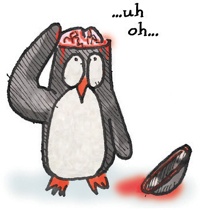Chapter 2. How the Brain Works

There are a lot of definitions of “game” out there.
There’s a field called “game theory,”* which has something to do with games, a lot to do with psychology, even more to do with math, and not a lot to do with game design. Game theory is about how competitors make optimal choices, and it’s mostly used in politics and economics, where it is frequently proven wrong.
Looking up “game” in the dictionary isn’t that helpful. Once you leave out the definitions referring to hunting, they wander all over the place. Pastimes or amusements are lumped in with contests. Interestingly, none of the definitions tend to assume that fun is a requirement: amusement or entertainment at best is required.
Those few academics who have tried to define “game” have offered up everything from Roger Caillois’* “activity which is...voluntary...uncertain, unproductive, governed by rules, make-believe” to Johan Huizinga’s* “free activity...outside ‘ordinary’ life...” to Jesper Juul’s* more contemporary and precise take: “A game is a rule-based formal system with a variable and quantifiable outcome, where different outcomes are assigned different values, the player exerts effort in order to influence the outcome, the player feels attached to the outcome, and the consequences of the activity are optional and negotiable.”
None of these help designers find “fun,” though.
Game designers themselves ...
Get Theory of Fun for Game Design, 2nd Edition now with the O’Reilly learning platform.
O’Reilly members experience books, live events, courses curated by job role, and more from O’Reilly and nearly 200 top publishers.

